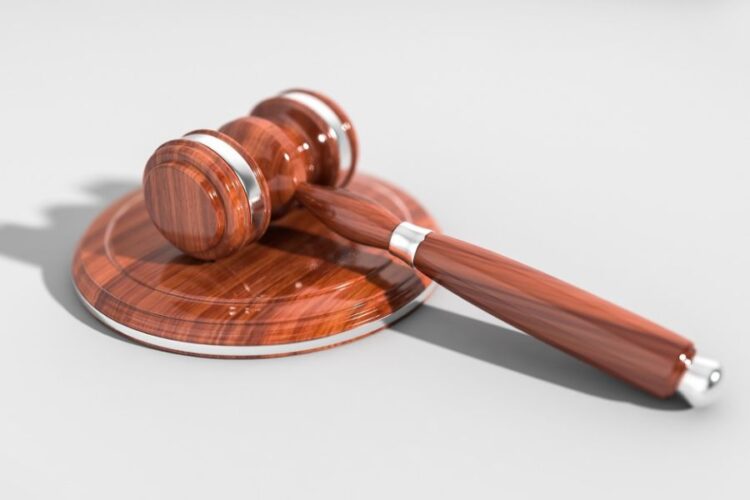The Camp Lejeune Contamination Lawsuit is a legal battle of profound significance, attracting attention due to its widespread implications for affected individuals and the pursuit of environmental justice. As we embark on this exploration, it’s essential to grasp the gravity of the situation and recognize why understanding the contours of this lawsuit is paramount.
Background of Camp Lejeune Contamination
Camp Lejeune, a United States Marine Corps base nestled in North Carolina, harbors a distressing history of water contamination. The contamination, stemming mainly from industrial solvents, unfolded over several decades. To comprehend the complexities of the lawsuit, it is imperative to delve into the historical context surrounding the origins and progression of the contamination crisis.
Health Impacts on Residents
The repercussions on residents’ health have been devastating, with documented cases of diseases directly attributed to the contaminated water. Beyond the statistics, personal stories and testimonials offer a poignant insight into the daily struggles faced by individuals and families impacted by the crisis. These narratives humanize the issue, emphasizing the urgent need for a comprehensive understanding of the health implications.
Legal Developments
Legal recourse has played a pivotal role in seeking justice for those affected by the Camp Lejeune contamination. Lawsuits filed against responsible parties navigate a complex legal landscape. It’s crucial to delve into the intricacies of the legal proceedings, including progress made, setbacks faced, and the ongoing legal intricacies shaping the narrative of this environmental lawsuit.
Environmental Impact
The environmental consequences of the contamination extend far beyond human health, influencing ecosystems and natural resources. An examination of these effects, coupled with insights into ongoing cleanup efforts, provides a holistic perspective on the environmental impact. This understanding is essential for addressing not only the immediate consequences but also the long-term sustainability of the affected areas.
Regulatory Response
In response to incidents like the Camp Lejeune lawsuit, government regulations related to water contamination have undergone significant evolution. Understanding the changes in policies and the implementation of preventive measures is crucial to assessing the effectiveness of regulatory responses. This section will shed light on the dynamic nature of regulatory frameworks and their impact on preventing future instances of contamination.
Stakeholders Involved
Identifying key stakeholders in the Camp Lejeune Contamination Lawsuit is essential for grasping the multifaceted nature of the issue. Beyond the immediate parties involved, understanding the role of government agencies and advocacy groups adds depth to the narrative. This section aims to provide a comprehensive overview of the various entities contributing to the legal and environmental discourse surrounding the contamination.
Compensation and Settlements
The aftermath of the contamination has seen efforts to provide compensation for affected individuals. Delving into the details of these compensation mechanisms and the outcomes of settlements offers insights into the practical implications for those seeking justice. This section aims to unravel the complexities of compensatory measures and their role in ameliorating the consequences of contamination.
Public Awareness and Advocacy
Public awareness campaigns have been instrumental in shaping the narrative around the Camp Lejeune Contamination Lawsuit. Examining the impact of these campaigns, coupled with insights into ongoing advocacy efforts, provides a nuanced understanding of how public opinion can influence legal and environmental outcomes. This section highlights the role of collective action in fostering change and demanding accountability.
Lessons Learned
Reflecting on the Camp Lejeune Contamination Lawsuit yields valuable lessons that extend beyond this specific case. Analyzing these lessons provides insight into how similar cases can be approached in the future. By identifying patterns and areas for improvement, stakeholders can contribute to preventing and addressing water contamination crises on a broader scale.
The Human Side of the Lawsuit
Amidst the legal complexities and environmental discussions, it’s essential to spotlight the human side of the Camp Lejeune Contamination Lawsuit. Personal stories and the daily struggles of affected individuals underscore the urgency of the issue. Examining community support and resilience adds depth to the narrative, emphasizing the strength and perseverance exhibited by those facing adversity.
Conclusion
Summarizing the key points and takeaways from the article reinforces the importance of addressing water contamination issues. By weaving together the legal, environmental, and human dimensions, the conclusion serves as a reminder of the interconnectedness of these elements. This synthesis reinforces the urgency of the situation and the collective responsibility to act.
FAQs
What is the current status of the Camp Lejeune Contamination Lawsuit?
The lawsuit is ongoing, with legal proceedings continuing as affected individuals seek justice and compensation. Updates on specific cases and legal developments can be found through reputable news sources and legal updates.
How did Camp Lejeune’s contamination go unreported for such an extended period of time?
Various factors contributed to the prolonged detection of the contamination, including inadequate testing, limited awareness of the potential hazards, and regulatory oversights. The complexity of the issue and the gradual onset of health impacts also played a role.
What diseases are linked to the Camp Lejeune water contamination?
Diseases such as leukemia, liver cancer, and birth defects have been linked to the contaminated water at Camp Lejeune. Medical studies and ongoing research continue to explore the full extent of health impacts.
What role do advocacy groups play in the lawsuit?
Advocacy groups play a crucial role in raising awareness, supporting affected communities, and pushing for policy changes and accountability. Their efforts contribute to the broader movement for environmental justice and the well-being of those impacted by water contamination.
How can individuals support the Camp Lejeune cause?
Individuals can support the cause by staying informed through reliable sources, participating in advocacy efforts, and offering support to affected communities. Additionally, encouraging sustainable practices and engaging in dialogues about water safety contribute to the collective effort to prevent similar incidents in the future.










